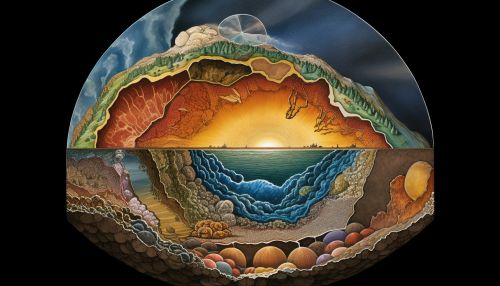Asthenosphere
Introduction
The asthenosphere is a region of the Earth's upper mantle that lies beneath the lithosphere and is involved in plate tectonic movements and isostatic adjustments. This layer of the Earth's interior is characterized by low resistance to plastic flow and convection.
Structure and Composition
The asthenosphere is composed primarily of solid rock that behaves plastically over geologic time. It is predominantly made up of silicate minerals, such as olivine and pyroxene, which are capable of flowing under intense pressure and high temperatures. The asthenosphere's depth varies, beginning at approximately 80 to 100 kilometers beneath the Earth's surface and extending to about 700 kilometers below the surface.


Physical Properties
The asthenosphere is characterized by its mechanical properties. It is a region of the mantle where temperatures are high enough to cause a small fraction of the rock to melt. This partial melting leads to a reduction in the shear strength of the asthenosphere, making it mechanically weak and allowing it to flow. This plasticity allows the asthenosphere to accommodate the strain of the overlying lithosphere, facilitating plate tectonic movements.
Role in Plate Tectonics
In the context of plate tectonics, the asthenosphere plays a critical role. It provides the necessary lubrication for the movement of lithospheric plates across the Earth's surface. The plasticity of the asthenosphere allows it to deform and flow, accommodating the movement of the overlying lithospheric plates. This movement can lead to the formation of geological features such as mountains, oceanic trenches, and volcanic arcs.
Isostatic Adjustments
The asthenosphere also plays a crucial role in isostatic adjustments, which are the gravitational equilibrium between the lithosphere and the asthenosphere. When a weight is added or removed from the lithosphere, such as through erosion, deposition, or ice melting, the lithosphere and asthenosphere will readjust to maintain equilibrium. This process is known as isostasy.
